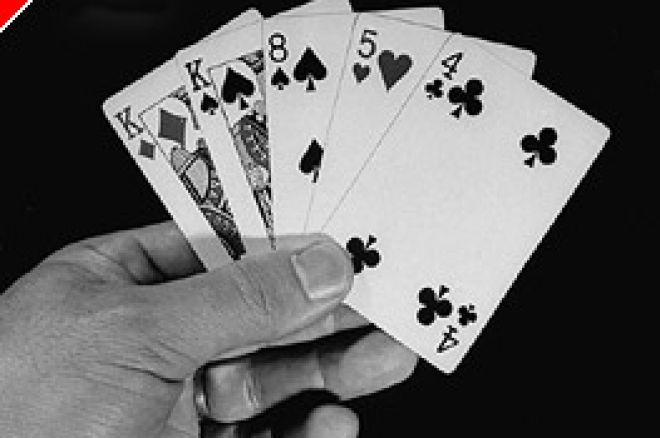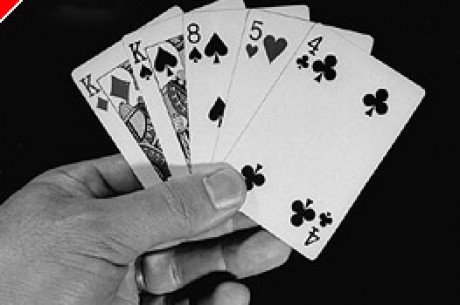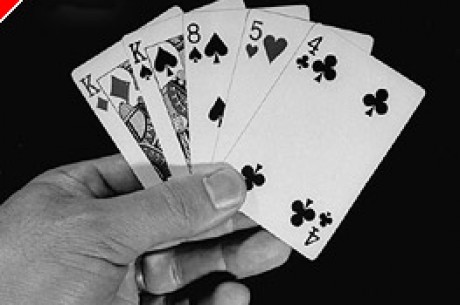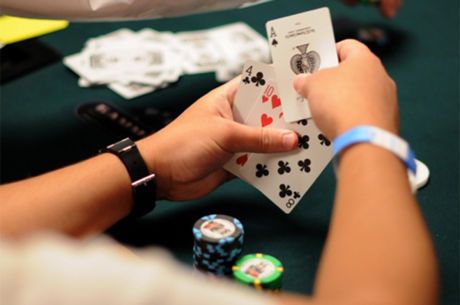Introduction to Omaha - Building an Online Stack at Pot Limit

Tony is a regular on-line and card room player living in England. He mostly plays Texas Hold'em and Omaha (High and Split) at fixed, pot and no limit, at both cash and tournament tables.
Introduction
Most, if not all, on-line poker rooms prevent a player sitting down at a pot limit game with more than a certain maximum, often this is 100 times the big blind. This has the consequence of turning a game at a full table into a hybrid between pot limit and no limit stakes, due to the likelihood that players could easily be set all-in if they are involved in pot-raises and re-raises. This makes a difference to decision-making.
It is commonly accepted that the player with the biggest stack in pot limit Omaha should have an advantage as he is able to use it to intimidate smaller stacks into folding good hands or simply put players all-in with a good chance of cleaning them out.
The key therefore, when joining an on-line game, is building your stack from the restricted size that is the maximum buy-in to a substantial pile that can do damage to the rest of the table.
The power of the pot raise
Let's take a hypothetical example. All 10 players start with $100 in a $0.50/$1 pot limit game. Player 1 is on the button and players 2 and 3 post the blinds.
Player 4 folds, players 5 and 6 call $1, player 7 folds and player 8 calls $1. At this point, the pot contains 1 ½ blinds and 3 bets making $4.50. Player 9 decides to make a small raise (less than a pot bet) to $3. Player 10 folds and Player 1 (on the button) decides he likes both his hand and his position and pot raises. The pot has $7.50 in it before making his bet. He needs to bet $3 to call Player 9. This makes the available maximum raise $10.50 over his basic call of $3. He goes for it and bets $13.50.
The blinds fold while Players 5, 6 and 8 realise they are holding worthless junk when faced with a bet 13 times the size of their "limps". Each folds losing $1. This highlights the futility of limping into a pot in early position. How many $1 bets are lost per hour by players doing that? Crazy! Don't do it if you want consistent profits.
Back to the action which is now heads up. Player 9 first raised to $3 because he liked his hand. If it is a very strong one, Player 9 may decide not to see a flop for further help but instead back his hand with power by re-raising the pot again and putting Player 1 to a severe test of faith. Player 9 may think Player 1 is using his button position to attempt a small pot steal.
The possible pot re-raise is big. The pot before the bet is $21. The call needed is $13.50, making a possible raise of $34.50. Player 9's bet can therefore be $48. At this point, Player 1, having started with $100, has committed $13.50. He knows now that he could realistically be committed to putting the whole of his starting stack into the pot if he calls to see a flop and he likes what he sees. He could therefore decide not to rely on the flop to help him but instead, given his strong starting cards, re-raise again. A pot re-raise is potentially $48 + $48 + $70 = $166. He only has $86.50 left so at this point the players would be all-in, just like in no limit poker.
Building the foundation
The example just given shows that one or other of those players could immediately double up. To an extent, but not always in one go, this is what you need to do to get up and running. I have found that building the stack is hardest between $100 (when a big pot might go for you or against you) and $300. Winning that first big pot is important to get you started on building a stack but you have to be prepared to reload if at first you don't succeed. So long as you are committing money when the cards are in your favour, you will get there. The basic rule of ensuring that the stakes you play are well within the confines of your bankroll cannot be emphasised enough.
So, to another example:
You have entered a $0.5/1 pot limit Omaha table with the maximum $100. You are waiting patiently for cards and folding even moderately good hands, until you find yourself on the button with As Ac Js 10c. This is ideal, offering draws for nut straight, nut flush and nut full house.
You shouldn't be timid with hands like these but you might still wish to disguise the strength by perhaps betting a half pot rather than an all-out pot bet which tends to put opponents on "Aces Alert".
Four players limp in before you. The pot is $5.50 so you could raise a further $7.50 but decide to limit it to $4. This should scare off the awful hands but it may still attract a number of callers. Usually, they will call rather than raise but, if you did get a re-raise, your hand justifies a big over-the-top re-re-raise. A hand like that is best played heads up before the flop for maximum success.
In the event, you only receive $4 calls from three players. The pot is now $21.50. The flop comes down Ks 9s 3c. This is not bad as it gives you a nut flush draw (9 possible outs - the remaining spades), a "belly-buster" nut straight draw (4 outs - the queens) and your AA may still be good so long as the other three don't hold KK, 99, 33, K9, K3 or 93. You cannot be sure but, because you are on the button, the three of them have to act before you do - a great benefit.
One player bets a weak $5 (about quarter pot), one folds and the other calls. This doesn't signify strength but some players might slow-play a set, albeit a risky manoeuvre. You do not want to see another K, 9 or 3 come on the turn as this could make someone a full house and leave you stranded. Therefore, this is no place to call. You have to make it expensive for your opponents to catch their cards. Pot raise is the name of the game here as you have two cards to come in which to make a better hand. Furthermore, a pot raise here - which would be $41.50 - could cause an immediate fold from both opponents. Many players try to be cute and bet much less looking for more money from opponents but this isn't wise when you still only hold a certain single pair. Better to take down a $31.50 pot with no further ado. It is how you accumulate chips especially as your stack grows.
After two or three successes, your stack is may be up to $200. It becomes easier to intimidate low stacks and you can slightly loosen your starting hand requirements in good position with a view to challenging the low stacks when they look like they want to go all-in. Before you know it, you are above $300. Don't get reckless or too slack with hand requirements but once you have some strong cards you can afford to be aggressive with them since you cannot be busted out.
Conclusion
Building the foundations of a stack up from $100 requires patience, discipline, perseverance and a little luck. But I have found that when I am above the $300 level, something changes in players' attitudes towards you. They are afraid to attack and this adds to your advantage. I have found then that moving up to higher numbers like $500 and beyond is a relatively smooth process, possibly due to the increased confidence I feel. It is also faintly amusing when a new player joins with his maximum $100 and you imagine his reaction as he scans the table and sees your $750 sitting there! They either disappear immediately through fear or see it as a challenge and take an aggressive stance. This can work to your advantage too since you can easily match their bets or re-raise them if your hand warrants it.
Finally, it is just plain good fun being king of the table!
TB
9-12-05








